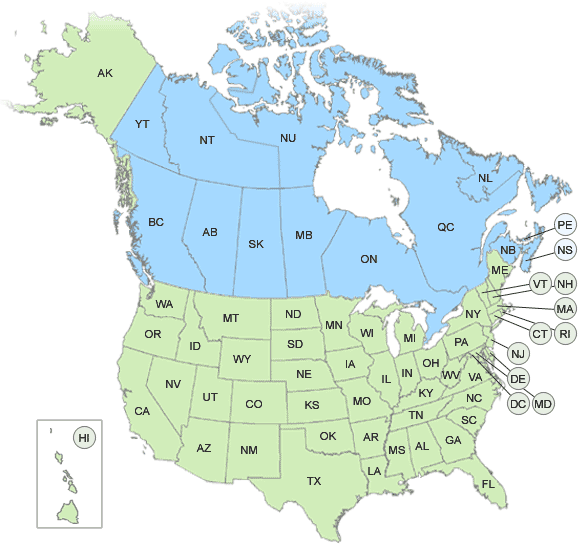In-Transit Shipments
 The trucking industries in the United States and Canada are linked to each other. In other words, shipping policies in one country might impact the shipping industry in the other country. For years, Canadian truckers traveling across their country from West to East might have chosen to travel along the highways in the United States. The reasons for traveling in the US, even though their starting and destination points are in Canada, is because the US roads are safer during the winter months, there are more rest spots and there could be some cost-savings that might lower some trucking rates. If an American trucker was going from Buffalo to Detroit, they might travel through Canada. Both examples are considered to each be an in-transit shipment. Essentially, this is a domestic shipment that temporarily travels by truck through a nearby nation.
The trucking industries in the United States and Canada are linked to each other. In other words, shipping policies in one country might impact the shipping industry in the other country. For years, Canadian truckers traveling across their country from West to East might have chosen to travel along the highways in the United States. The reasons for traveling in the US, even though their starting and destination points are in Canada, is because the US roads are safer during the winter months, there are more rest spots and there could be some cost-savings that might lower some trucking rates. If an American trucker was going from Buffalo to Detroit, they might travel through Canada. Both examples are considered to each be an in-transit shipment. Essentially, this is a domestic shipment that temporarily travels by truck through a nearby nation.
Truckers performing an in-transit shipment saw many benefits. Few documents were required and the truckers could use the Fast and Secure Trade (FAST) Lanes. The reason for these relaxed rules is because the cargo was not going to stay in the nation, just traveling through it briefly.
After 9/11, the rules changed in the US. Full documentation and international freight laws were required for Canadian truckers. This includes submission via the e-Manifest. This was problematic for Canadian truck driver, especially those hauling LTL freight.
The good news is that the Canada Border Services Agency and the US Customs and Border Protection recently agreed to go back to the pre-9/11 rules for Canadian truckers. Freight forwarders support this change for in-transit shipments.
Sign up today and you can receive shipping quotes for vehicles and other specific commodities.
